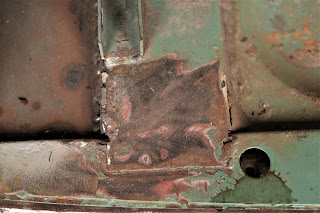So, let’s put some context to
this blog. i.e. what prompted it? Well, my grandfather was a craft trained welder. One who spent forty years in heavy industry. He was selected to work on the first
generation of Magnox (nuclear) reactors, back in the early 1950s.
Prolonged exposure to fumes,
burns, ARC eye, and intense heat had lasting consequences for his health.
By 1970, he had retired. As now, men were primarily defined by their occupation, and my grandfather felt the world no longer valued him.
That didn’t stop him lecturing
us in the importance of good weld penetration, correct procedure for ARC, MAG, MIG, TIG and
other welding processes. Little surprise that I was very drawn to skilled metal
workers, and they similarly intrigued by my interest.
Beneath sometimes surly
exteriors; lay a real generosity of spirit and a touching humility. I’d bust something,
they’d help me fix it, or knew someone who could. At this point in my life, I
had been written off by the school system (and indeed, consigned myself to the
margins).
They encouraged me to push and
further myself academically. Bicycle frame building, vehicle restoration work
were big draws for me. Not commercially, but for my own sense of achievement/economics.
Like most technology, electric
welders have become very affordable.
Back in the early 1970s,
workshop garages and body shops were moving from Oxyacetylene to MIG units. MIG
(Metal Inert Gas) was originally developed for use in munitions factories
during the Second World War.
A continuous feed of wire
meant greater efficiency, so more tanks, planes etc could be produced. The wire feed system also required less
skilled operatives. Given ten minutes instruction, those with no experience (but able to draw a straight line with a marker pen, could produce a scabby weld).
Possibly this gave rise to the
notion that manual labour, and welding specifically, was easy. However, as skilled welder/related trades will tell you... Any fool can blast something
together with heat. Crafting a strong join, that doesn’t degrade the parent
metal, is entirely different. i.e. A skilled man or woman makes a task LOOK
easy but that took years of training.
I was taught by my grandfather
(and others) to recognise a good weld. I
received formal instruction in basic welding process, from a coach builder and a
very intimidating tool maker, in my late 20s. Skills that came in very useful,
when motor/cycle touring and facilitated some basic, though very satisfying
fabrication projects.
I can weld, but would NEVER
describe myself as a weldor. Against this backdrop, I’ve been sufficiently moved
to document the abysmal, hilarious and downright dangerous. Examples, I encounter as an industrial photographer.
















